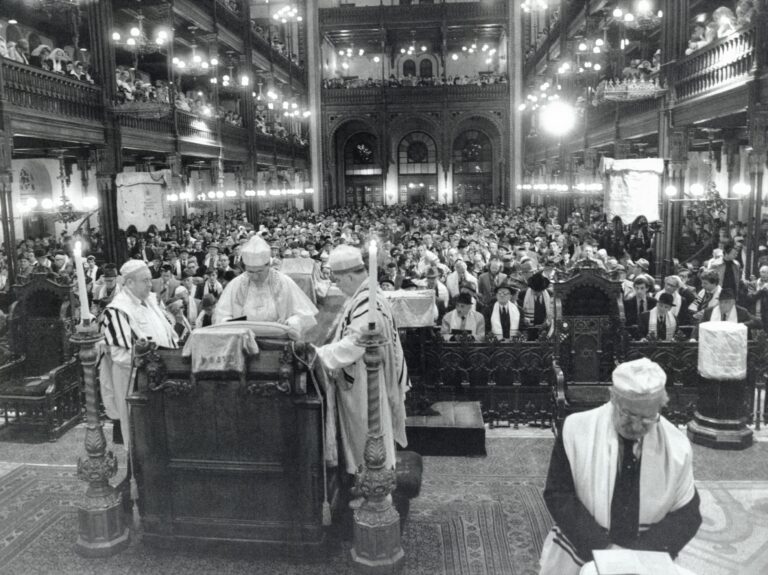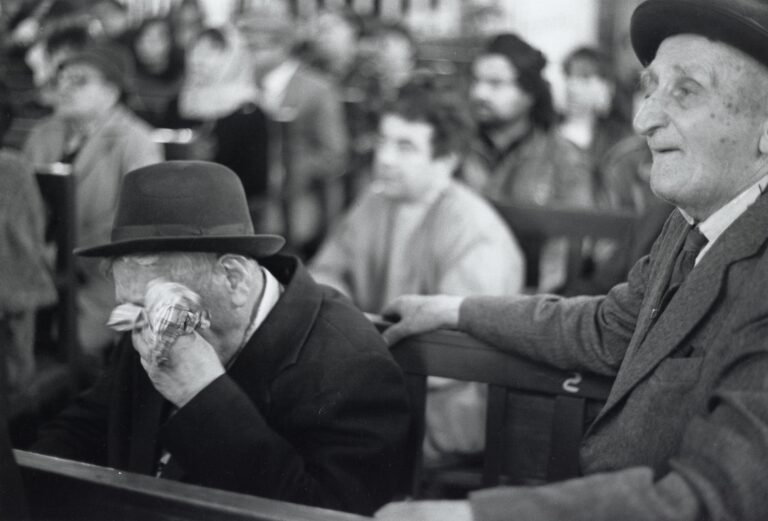When is Yom Kippur? Observed on the tenth day of the Hebrew month of Tishrei — September or October — Yom Kippur culminates the Ten Days of Awe. Above all, it’s a chance to heal and move forward as one global Jewish family — a theme that reflects JDC’s century-plus commitment to building a brighter future for Jews around the world.
Let’s dive into the history and traditions surrounding Yom Kippur together.
The Significance of Yom Kippur
The Jewish Day of Atonement, Yom Kippur serves as a focal point for repentance and reconciliation. Its primary aim is to facilitate a deep, introspective process of seeking forgiveness from God and fellow human beings. Traditionally, Jews dedicate this day to prayer, fasting, and reflection, focusing on atoning for sins committed over the past year.
The historical roots of Yom Kippur can be traced to biblical times, specifically within the Torah. Leviticus 16 outlines the ancient scapegoat ritual, where a goat symbolically carried the community’s sins into the wilderness, representing purification and atonement. This ritual underscores the importance of acknowledging one’s faults and striving for spiritual renewal.
Central themes of repentance and forgiveness define the observance of Yom Kippur and how it is celebrated. It is a time for introspection, prompting individuals to examine their actions and attitudes and seek to make amends. The concept of teshuvah (return) emphasizes turning back to a righteous path, while seeking forgiveness from others highlights the interconnectedness of the Jewish community. Participants engage in heartfelt prayers and rituals, embracing the hope for a fresh start and the opportunity for personal growth.
The Jewish Day of Atonement: Traditions and Rituals
Yom Kippur is observed with a variety of traditions that promote reflection and repentance. Fasting is one of the most prominent practices, where individuals abstain from food and drink for 25 hours, starting at sunset on the eve of Yom Kippur and ending at nightfall the next day. This fast serves as a tool for self-reflection and spiritual cleansing, allowing individuals to focus on their relationship with God and their community.
A key part of Yom Kippur services everywhere is the chanting of Kol Nidre. Composed in Aramaic and chanted three times at the start of the service, Kol Nidre is a legal formula that ensures congregants do not transgress vows they unknowingly have made. In a less literal sense, Kol Nidre also sets the tone for Yom Kippur, uniting Jews with God and each other — and providing a space to reflect on the decisions one may have made over the past year.
The Book of Jonah, read during the afternoon Yom Kippur services, also reflects themes that are core to the holiday. The story of Jonah teaches that no one is beyond God’s reach, and that just as Jonah was unable to avoid God, so, too, are Jews unable to escape divine justice. On the other hand, God’s sparing of the people of Nineveh also teaches that God’s mercy attends those who repent for their past wrongs.
Prayer also plays a central role in Yom Kippur observance. Many attend synagogue services, which feature special prayers and liturgies designed for this solemn day. The recitation of the Vidui (confessional prayers) and the Unetaneh Tokef (a prayer reflecting on life and death) fosters a sense of communal responsibility and personal accountability. These prayers encourage worshippers to confront their actions over the past year and seek forgiveness from both God and fellow community members.
Community involvement is a vital aspect of Yom Kippur observance. Synagogue services are well-attended, bringing together families and friends in a shared experience of introspection and prayer. Many communities also engage in acts of charity and kindness, reflecting the values of compassion and generosity central to Jewish ethics. By participating in communal worship and reflecting on themes of atonement and reconciliation, individuals deepen their personal faith and strengthen community bonds.
The Role of Yom Kippur in Jewish Culture
Beyond its spiritual significance, the Yom Kippur holiday plays a vital role in Jewish culture, serving as the culmination of the High Holy Days. It unifies families and communities in shared rituals and prayers. The communal aspect is evident in synagogue gatherings, where the collective experience of seeking forgiveness and spiritual elevation is deeply felt. This observance reinforces cultural identity and continuity among Jews worldwide, reminding them of their shared history and values.
Yom Kippur’s impact extends to strengthening interpersonal relationships. Seeking forgiveness mends broken ties and fosters empathy and understanding within families and friendships. This emphasis on reconciliation cultivates stronger bonds, encouraging individuals to approach relationships with greater compassion and respect. As people emerge from Yom Kippur with renewed purpose, connections formed during this sacred time contribute to a more cohesive and supportive community.
When is Yom Kippur?
When is Yom Kippur? Observed on the tenth day of the Hebrew month of Tishrei — September or October — Yom Kippur culminates the Ten Days of Awe.
Here are dates for Yom Kippur in the coming years:
- 2026: September 20 at sundown – nightfall on September 21
- 2027: October 10 at sundown – nightfall on October 11
- 2028: September 29 at sundown – nightfall on September 30
- 2029: September 18 at sundown – nightfall on September 19










